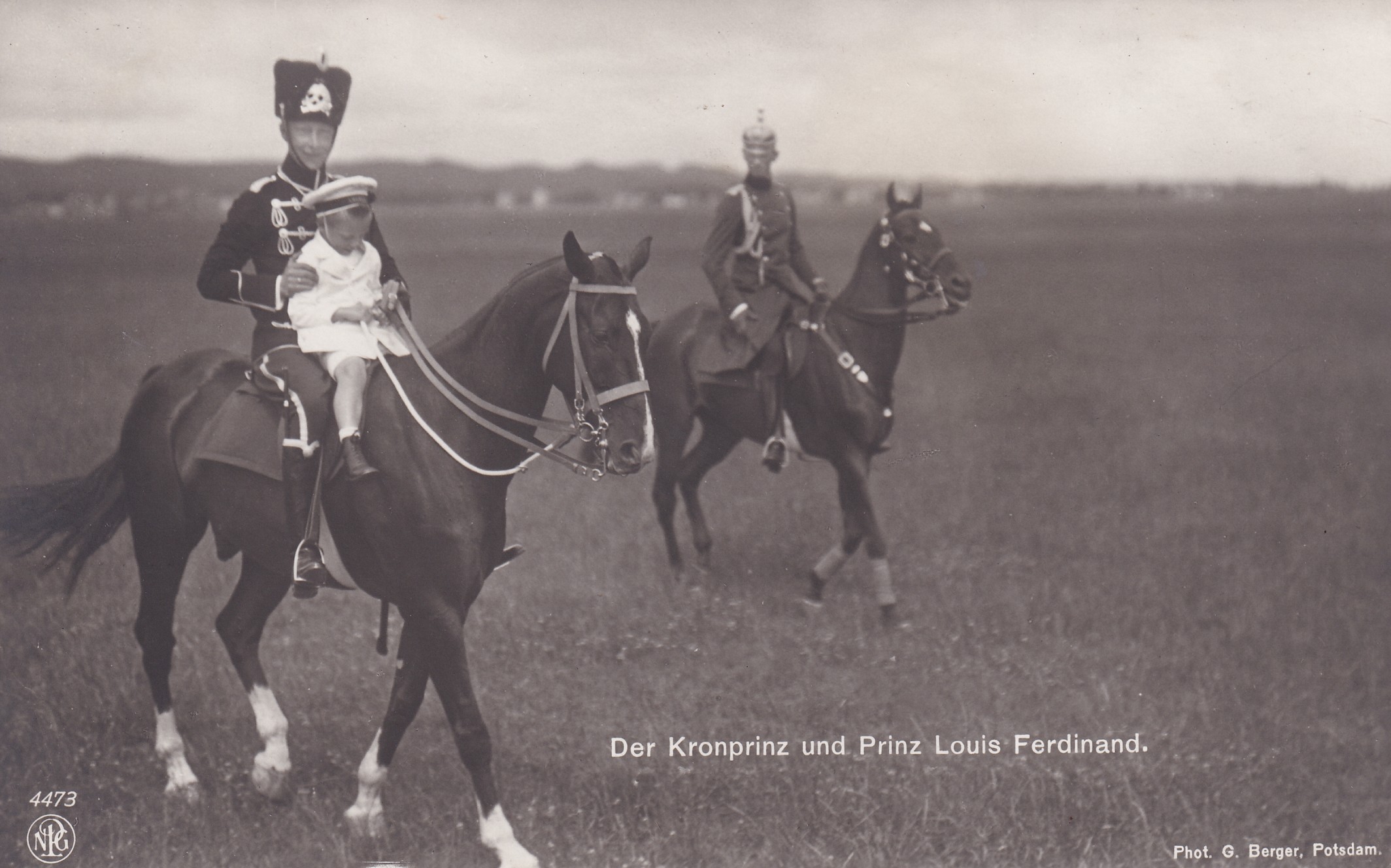Bildpostkarte mit einer Fotografie, die Kronprinz Wilhelm (1882-1951) mit seinem zweitältesten Sohn Prinz Louis Ferdinand (1907-1994) zu Pferd zeigt. Der Kronprinz trägt die Uniform des 1. Leib-Husaren-Regiments Nr. 1 ("Totenkopfhusaren"), sein vor ihm sitzender Sohn in Matrosenmütze, weißem Blazer und kurzen Hosen. Im Hintergrund ein weiter berittener Militär mit Pickelhaube und Uniformrock, auf einem weiträumigen Militärgelände ("Tempelhofer Feld", Berlin?) aufgenommen. Bez. u. M. "Der Kronprinz und Prinz Louis Ferdinand.", u.l. "4473" und Signet "NPG" (Neue Photographische Gesellschaft), r. "Phot. G. Berger, Potsdam". Verso ungelaufen, handschriftl. die Namen und Geburtsdaten der Dargestellten sowie "1909".
en

